Ultimate Kale Guide: Recipes, Benefits & How to Use
The Ultimate Kale Guide: Benefits, How to Use It & Make It Delicious
Kale Will Truly Nourish, Cleanse, Revitalize & Alkalize Your Body!
In my newly updated kale guide I want to teach you how to make this powerful superfood an everyday food for you. Kale is an absolute must-have when it comes to nutrient-dense, alkaline living.
It has to be one of the most abundant sources of nutrients on Earth, delicious, dark green (so full of chlorophyll) and hugely alkaline.
But yet so few people incorporate it into their daily (or even thrice weekly) life.
To super-nourish, re-energize, revitalize and thrive I really recommend you do!
Kale can be very easily incorporated into your diet, even into your current meals, with a few simple tips and ideas (see below in the ‘How to Sneak It In’ section).
There are a couple of different common varieties of kale.
Each are as alkaline and nutrient-dense as the other, so you can’t go too wrong with either.
Kale #1: Cavolo Nero (Tuscan Kale/ Tuscan Cabbage)
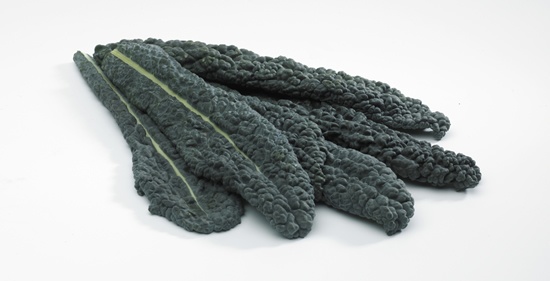
This is the greeny/bluey kale with the bigger, softer leaves. It’s really versatile as it doesn’t require a lot of cooking so you can have it in salads raw (if you slice finely) and is really easy to blend and juice.
You can also steam or very rapidly stir fry this type of kale.
A super-quick meal I make in emergencies is..
Simply finely chop tuscan kale, some green beans and broccoli, then flash stir fry in coconut oil.
After 3 minutes turn off the heat and stir through bean sprouts and a handful of coriander with a little Bragg Amino’s and serve (often with sliced red chilli).
Delicious and takes a total of 7 minutes including prep.
Kale #2: Curly Kale (Curly Leaf Kale)
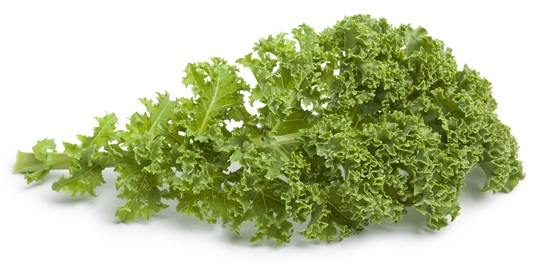
This is the kale we’re more used to seeing in the grocery store.
It’s slightly tougher than the cavolo nero so is better to use in cooked meals like more complex stir-frys (than the one above), soups, stews, curries etc.
I sometimes cut out the stem if I want it to be a little quicker to cook and less crunchy, although some people love that crunch.
Still juices well, but probably a little too much to blend for a cheaper blender. It would be fine with a Vitamix or Nutri-Bullet etc.
But a standard blender might struggle with it a bit!
Both varieties of kale, the curly kale and the cavolo nero/Tuscan Kale are equally nutrient dense and have a very similar nutritional profile.
I wouldn’t recommend one over the other for nutrients – they just have slightly different textures and uses.
Benefits of Kale
- Antioxidant Benefits: containing huge amounts of the antioxidant vitamins A, C and K, as well as sulphur-containing phytonutrients, kale is one of the most antioxidant rich foods we can consume.
 Without us consuming enough antioxidants we suffer from oxidative stress. This is the process of our cells breaking down and dying. The ageing process.
Without us consuming enough antioxidants we suffer from oxidative stress. This is the process of our cells breaking down and dying. The ageing process.It is also the root-cause of many degenerative conditions. In fact, the combination of oxidative stress and chronic inflammation are one of the primary factors for the development of many forms of cancer.
(And of course, chronic over-acidity is the basis of oxidative stress and chronic inflammation…)
This trifecta (over acidity, oxidative stress and chronic inflammation) has been linked in studies to at least five types of cancer. Kale is one of the most researched foods with regards to it’s ability to fight this.
The preventative benefits of kale are linked to the combination of the strong antioxidants called carotenoids and flavonoids.
But it doesn’t stop there. Kale has been researched and shown to contain significant levels of at least 45 different antioxidants, all of which play a role in fighting against conditions linked to oxidative stress and inflammation.
And remember, oxidative stress is the name for the body breaking down. In essence it is the aging process of the body.
So if you want to feel good, look good and be nourished inside and out – kale is going to be your new best friend!
- Anti-Inflammatory Benefits: as mentioned above, one of the greatest benefits of kale is it’s anti-inflammatory effect.The omega 3 and huge vitamin K content in kale means that it is a super-anti-inflammatory.
- Anti-Cancer Benefits: kale has been proven in numerous studies (see references below) to help protect against at least five cancers (bladder, breast, colon, ovarian and prostate).As mentioned, this is due to it’s high content and combination of particular antioxidants in the carotenoid and flavonoid family (particularly lutein and beta-carotine).
- Cardiovascular Support: research has also shown that when we eat kale, fiber-related nutrients bind with certain bile acids in the intestine and pass out of the body.When this happens the liver has to replace these bile acids and draws upon our existing cholesterol supply, thus lowering cholesterol.
- Eye Health: Kale is also rich in the eye-health promoting lutein and zeaxanthin compounds which can help prevent macular degeneration
- High in Fibre: at 7 grams of fibre per 100 calories of kale, this is absolutely magnificent for the digestive system. Kale also contains glucosinolates, which means it helps protect our stomach lining from bacterial overgrowth (of bad bacteria such as Helicobacter pylori).
- High in Chlorophyll: being a super-leafy, dark-green plant, chlorophyll is especially high in chlorophyll. This is something that makes me very happy.Chlorophyll helps to detoxify the body by collecting toxins such as heavy metals, pesticides, herbicides and other toxins…and then taking them straight out of the body!
Note: Steaming Increases THIS Important Benefit —>
When steamed, Kale can increase it’s power to provide cholesterol-lowering benefits.
The fibre in kale does a better job of binding together with bile acids in your digestive system when it’s steamed.
Un-steamed, raw kale can still do this bile-excreting, but nowhere near as well.
So, easy to remember: sometimes remember to steam your kale!
Nutritional Profile per 1 serve (RDI/RDA/RDV):
Vitamin K: 1180%
Vitamin A: 98.3%
Vitamin C: 71%
Manganese: 27%
Copper: 22%
Vitamin B6: 10.5%
Fiber: 10.4%
Calcium: 9.3%
Potassium: 8.4%
Vitamin E: 7.4%
Vitamin B2: 6.9%
Iron: 6.5%
Magnesium: 5.8%
Vitamin B1: 5.8%
Omega 3: 5.4%
Phosphorus: 5.2%
Protein: 4.9%
Folate: 4.2%
Vitamin B3: 4%
Delicious Kale Recipes:
These easy, delicious recipes from my blog are all really quick, really yummy ways to get kale into your life.
If you have one of these recipes each day of the week you’ll be getting a total of around 7-8 serves of kale into your weekly diet! And believe me, you’ll notice the difference!
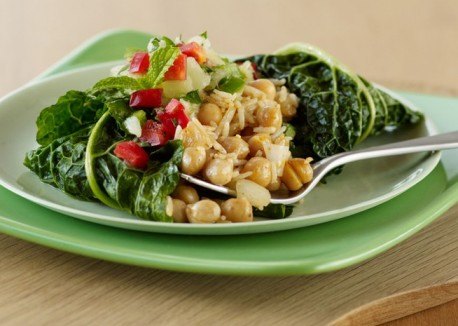
- Easy Kale Chips!– a super simple, 10-minute, hugely alkaline snack!
- Kale & Chickpea Mash – filling, simple and satisfying twist on conventional mashed potato, but with heaps of protein, fiber and greens!
- A Pint of Real Kale – a huge salad that packs a punch!
- Kale Roll Ups – a great main or a very sexy side dish!
- Super Green Drink – the classic alkaline green juice, and FULL of nutrient goodness!
Kale Guide: How to Buy (season/buying tips)
 Kale is readily available in so many mainstream grocery stores nowadays.
Kale is readily available in so many mainstream grocery stores nowadays.
As recently as 5 years ago I never saw it at my local grocery store – but now it’s available seemingly 365 days of the year.
Kale is in season during the colder months, and can easily survive a frost (in fact after a frost Kale is actually sweeter!).
So it’s ‘in-season’ months are during Autumn and Winter.
When buying, choose dark green, crisp leaves and thinner stalks.
And to store (and this is a handy tip I got from Sarah Wilson, who got it from Field to Feast:
“Wrap your kale in a damp cloth or tea towel. As the towel dries out, dampen it a little and rewrap (this is also a great trick for keeping herbs fresh… if you were wondering)”
How to Prepare & Cook Kale
It is generally best to remove any thick, tough stems from the kale before cooking as these can be a little tough. But if you’re in a hurry it’s not too big of a deal to leave them on.
You should wash kale as you go, as pre-washing and storing can lead to bacteria growth in the folds and cavities of the leaves.
Kale can be cooked easily in a few different ways:
- Lightly steamed
- Eaten raw (best chopped finely)
- Juiced or blended
- Stir fried in coconut oil
- Cooked in stews, sauces, curries etc
It is so versatile and nutritious that I would look to sneak it into every meal that you possibly can, and here’s some ideas…
How to Sneak It In
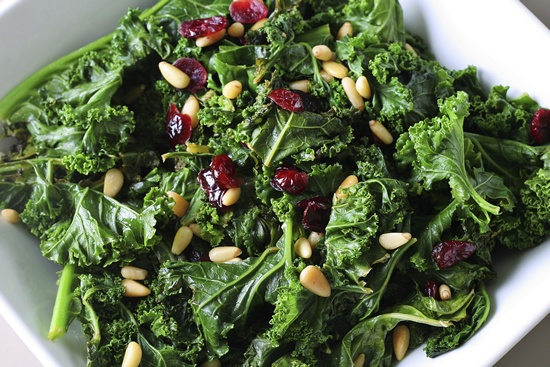
Here are my top tips to sneak it in:
- Trim the stalks and blend into any sauce (pasta, curry, veggie sauce, salsa etc)
- Drizzle with olive oil and very lightly bake on a low heat to make quick Kale Chips!
- Chuck a sliced up handful into any soup – even if it’s a packet soup – throw in the kale and make a 1000% improvement to it’s nutritional profile!
- Slice into any salad
- Slice and toss through any pasta dish
Or just include in any smoothie or juice!
A Final Word On Kale…
As you can see, I’m passionately in love with kale.
It is a nutritional powerhouse, delicious, easy to work with and supremely alkaline.
What more could you want?
It’s also high in antioxidants, anti-inflammatory nutrients, it’s anti-cancer, lowers cholesterol, boosts protein intake, fibre intake and a myriad of other vitamins and minerals…
And it’s GREEN – meaning it’s rich in chlorophyll and alkalinity.
I love it. You will too (I hope).
And if you have any kale recipes, ideas, questions or comments follow the conversation here on Facebook or drop me a note in the comments below!
——————————————-
Research & Science Articles
Kale & Eye Health:
Associations between lutein, zeaxanthin, and age-related macular degeneration: an overview; Shannon Carpentier, Maria Knaus & Miyoung Suh; Critical Reviews in Food Science and Nutrition; Volume 49, Issue 4, 2009 (link)
Kale & Cancer Prevention
1. Cruciferous vegetable intake and cancer prevention: role of nutrigenetics. Ambrosone CB, Tang L. Cancer Prev Res (Phila Pa). 2009 Apr;2(4):298-300. 2009. (link)
2. Inhibition of bladder cancer development by allyl isothiocyanate. Bhattacharya A, Tang L, Li Y, et al. Carcinogenesis. 2010 Feb;31(2):281-6. 2010. (link)
3. Sulforaphane induces cell cycle arrest by protecting RB-E2F-1 complex in epithelial ovarian cancer cells. Bryant CS, Kumar S, Chamala S, et al. Molecular Cancer 2010, 9:47. 2010. (link)
4. Dietary isothiocyanates, glutathione S-transferase M1 (GSTM1), and lung cancer risk in African Americans and Caucasians from Los Angeles County, California. Carpenter CL, Yu MC, and London SJ. Nutr Cancer. 2009;61(4):492-9. 2009. (link)
5. Sulforaphane induces cell cycle arrest by protecting RB-E2F-1 complex in epithelial ovarian cancer cells. Christopher B, Sanjeez K, Sreedhar C, et al. Molecular Cancer Year: 2010 Vol: 9 Issue: 1 Pages/record No.: 47. 2010. (link)
6. Multi-targeted prevention of cancer by sulforaphane. Clarke JD, Dashwood RH and Ho E. Cancer Lett. 2008 Oct 8;269(2):291-304. 2008. (link)
7. Efficacy of interactive, automated programmed instruction in nutrition education for cancer prevention; Nagi B. Kumar PhD, RDabc, Darrel E. Bostow PhDbc, David V. Schapira MBChB, FRCP(C) & Kale M. Kritch MEd; Journal of Cancer Education; Volume 8, Issue 3, 1993 (link)
8. Cancer phytotherapeutics: role for flavonoids at the cellular level; Anup Kale, Sonia Gawande andSwati Kotwal; Phytotherapy Research; Volume 22, Issue 5, pages 567–577, May 2008 (link)
9. Consumption of Raw Cruciferous Vegetables is Inversely Associated with Bladder Cancer Risk; Li Tang, Gary R. Zirpoli, Khurshid Guru, Kirsten B. Moysich, Yuesheng Zhang, Christine B. Ambrosone and Susan E. McCann; Cancer Epidemiology, Biomarkers & Prevention; April 2014, 23 (4) (link)
Kale and Cholesterol Lowering
Steam cooking significantly improves in vitro bile acid binding of collard greens, kale, mustard greens, broccoli, green bell pepper, and cabbage. Kahlon TS, Chiu MC, and Chapman MH; Nutr Res. 2008 Jun;28(6):351-7. 2008. (link)
Kale & Digestive Health
Human Gut Bacterial Communities Are Altered by Addition of Cruciferous Vegetables to a Controlled Fruit- and Vegetable-Free Diet. Li F, Hullar MAJ, Schwarz Y, et al. Journal of Nutrition, Vol. 139, No. 9, 1685-1691, September 2009. 2009. (link)
Kale, Inflammation & Atherosclerosis
Dietary patterns are associated with biochemical markers of inflammation and endothelial activation in the Multi-Ethnic Study of Atherosclerosis (MESA). Nettleton JA, Steffen LM, Mayer-Davis EJ, et al. Am J Clin Nutr. 2006 Jun;83(6):1369-79. 2006. (link)
Kale & Oxidative Stress
1. Sulforaphane as an inducer of glutathione prevents oxidative stress-induced cell death in a dopaminergic-like neuroblastoma cell line. Tarozzi A, Morroni F, Merlicco A, et al. J Neurochem. 2009 Dec;111(5):1161-71. 2009. (link)
2. Cruciferous dithiolethione-mediated coordinated induction of total cellular and mitochondrial antioxidants and phase 2 enzymes in human primary cardiomyocytes: cytoprotection against oxidative/electr. Zhu H, Jia Z, Zhou K et al. Exp Biol Med (Maywood). 2009 Apr;234(4):418-29. 2009. (link)
3. Cruciferous Vegetable Intake Is Inversely Correlated with Circulating Levels of Proinflammatory Markers in Women; Yu Jiang, MD, MPH, Sheng-Hui Wu, MD, PhD, Xiao-Ou Shu, MD, PhD et al; Journal of the Academy of Nutrition and Dietetics; Volume 114, Issue 5, May 2014, Pages 700–708.e2 (link)




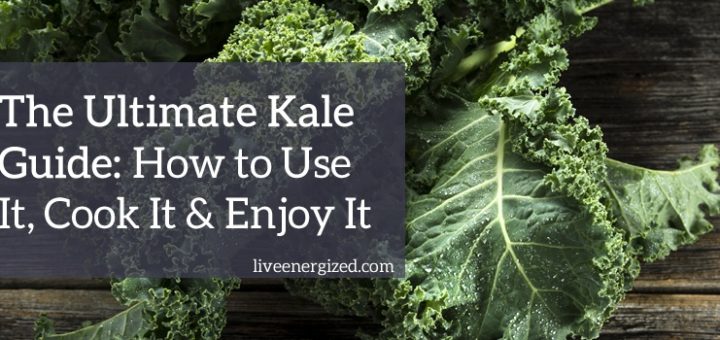
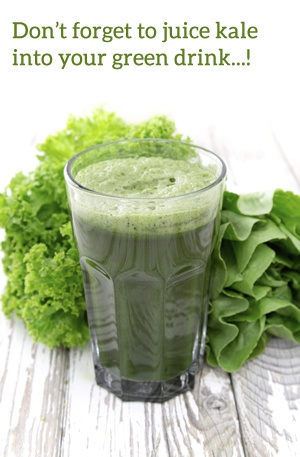 Without us consuming enough antioxidants we suffer from oxidative stress. This is the process of our cells breaking down and dying. The ageing process.
Without us consuming enough antioxidants we suffer from oxidative stress. This is the process of our cells breaking down and dying. The ageing process.

I am exposed to Toxic Mold from the basement of my house and I have been treated with steroids and antibiotics for the past three years straight!!!
I would like some more guidance on how I should eat in order to get my gut flora back in range to build my immune system in order to fight this and feel healthy/alive again.
I bought your book and I truly believe in your lifestyle of eating and your approach to better health.
Is there something else that will help me like vitamin C supplements or anything else that you can think of?
Can you make Kale & Chickpea Mash with dry chickpeas or will it be less nutritious?
Kale & Chickpea Mash sounds interesting but fresh chickpeas are not easy to find. Can you make this mash with dry chickpeas or will it be less nutritious, please?
Is KAle available in India. what is the name of kale in India.
I am in the Philippines. I do not find any kale in our market? How can I have kale and how to plant it.
Alexander Manuel
Hi Ross, Here in the South West of France, kale grows really well and it is so much nicer
when picked fresh. I had not thought of using it raw but am now going to try it. Thanks so much for all you are doing for us with all your ideas and research you do.
Hello Ross
Very interesting about Kale, but please impress on your readers the danger of eating too much of this and any K vitamin food if you are taking Warfarin. Vitamin K is known to act against the Warfarin and nullify its effect on the blood. Please publicise that only a little should be occasionally eaten by Warfarin-takers.
Thanks
Kind regards
I have been buying kale for about 7 years. I found that it USED to be .99 for a gigantic bunch of it, was softer (not as tough, dry or brittle). NOW it is 2.99 for half the size, and I agree, there is something ‘powdery’ on it. I think the ‘big box’ stores have found out it’s a superfood, and are taking advantage of us poor consumers! OR perhaps, the producers are growing it year round or getting it from different sources (CHina?) to fill the needs of the consumer. I still do eat it as much as I can.
Hi Deb – I know, as it’s gotten more popular it’s gotten way more expensive.
However, as a few other posters have said – it’s easy to grow, robust and it just keeps on giving!
Ross
Hi Ross, I’m wondering about your thoughts on whether it is better for the thyroid (iodine uptake) if the kale is cooked, rather than raw. I was once told by an alternative health provider to soak broccoli and other crucifers before eating. I’ve been soaking my kale for a few moments, before my morning shake in the nutri-bullet – but not knowing if that’s helpful and/or necessary. Thanks!
Hi Ross. I am retired and a have loved and eaten kale since I was a child from our garden but I’ve just found out that kale and many other green veges are not good for an underactive thyroid which I’m gutted about as I make a lot of green smoothies with them. I’d value your comments, ideas on this.
Best wishes, Sue
Hi Ross Kale is so easy to grow It doesn’t bolt to seed and I am still pulling leaves off 18 month old plants ( I’ve heard it will grow at least 3 yrs ) It is extremely vigorous . I have both varieties and urge everyone with a vegy patch to try . I grew mine from seed . Thanks for the recipes and info – love your blog and your energetic passion – Tony
Kale is so amazing, makes me feel awesome each morning!, im just wondering though, most of the Kale i buy from Woolworths has this very fine whiteish powder type stuff on it, i can usually get this off by rubbing it in water but its pretty tough. Is this pesticide? or part of the plant?
I think that the white powder on kale would be a harmless bacteria powder which the growers must spray on to kill white cabbage butterfly grubs( which are green). I buy it as Dipel for my kale in backyard. I heard a commercial broccoli grower, about 5 years ago on ABC radio, say that this bacteria spray meant that broccoli etc no longer needed any pesticides! These bacteria occur in nature, and they kill grubs, but are harmless to animals and humans.
Hi Ross we live in the mountainous area of the South Island New Zealand and kale survives the winter even here! It doesn’t grow a lot at that time though, so to make sure I have enough I juice the excess in summer. I put it into ice cube trays and every day even right in the middle of winter with snow on the ground outside I can drop a cube of pure kale into my green drink and there’s the nutrient punch of greens to start the day!! Cheers for your great articles.